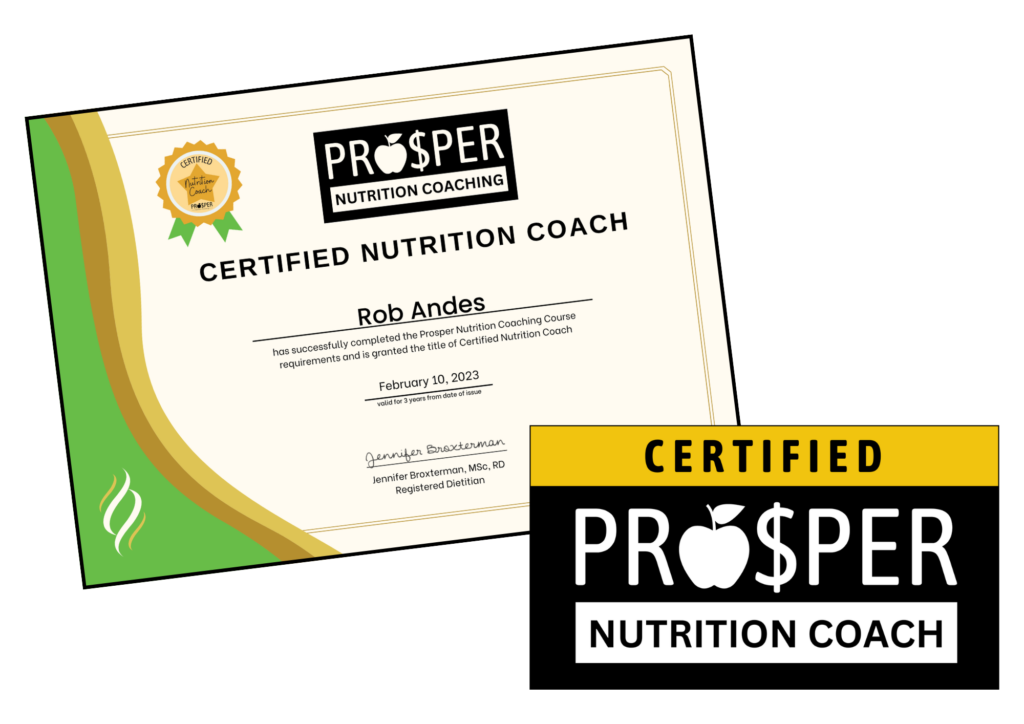

The Sapling vs The Mighty Oak Tree
Are your efforts to make lifestyle changes backfiring? It might help to think of yourself as a tree.
Written by Jennifer Broxterman, MSc, RD
Registered Dietitian, Founder of NutritionRx

So you just bought your first house, and it’s time to think about landscaping.
You head to the garden store and buy a small sapling tree, fully expecting it to take a number of years for it to grow into a young tree, and much longer still for it to become a mighty oak tree.
If only you had the same kind of patience when it comes to expectations of yourself.
Instead, you beat yourself up when you don’t lose 20 pounds in one month, or you don’t see abdominal muscles after six months of going to the gym and cutting out processed foods.
When it comes to habit change, it’s time to think of your body as a tree.
This means, instead of ripping the sapling out because you’re frustrated it hasn’t yet taken hold, embrace the long game and focus on constantly watering and grooming the tree.
Even if you mess up from time to time, the more you practice the positive habits, the more they’ll become second nature, and the more difficult it will become to pull out the roots. Doing so, however, involves embracing the long, slow path to sustainable change, the way you do when you plant a tree.
The same is, of course, true of bad habits. The more you practice them, the more ingrained they become, and the more difficult it gets to pull them from your life.
Uprooting
Think about the EFFORT to fully uproot a tree from the ground.
- A small sapling only requires a small amount of effort to rip its roots from the ground. It means positive habits and good intentions are easily derailed until consistent reps are put in over time.
- A medium sized tree requires quite a bit of effort to uproot it. If you backed over it with a pickup truck, you could probably knock the tree over, but it would take a pretty big life event to take down a good habit once the roots start to get a solid hold in the ground.
- An 80-year old mighty oak tree will require a team of professional arborists to chop down and haul away that massive tree, before they tackle stump removal. Think about that for a moment when you’re reinforcing a good habit like going to the gym for the 1000th time, or reinforcing a bad habit like reaching for the candy dish at work when stressed or mindlessly scrolling through your phone’s social media feed. What you do often, sticks around for the long run.
What does this look like in practice?
It means being intentional about what it is you’re planning on doing.
I like using a habit tracking calendar with my clients, which acts as a sort of checklist you can visually see. This allows you to monitor your growth.
Let’s say your goal is to eat vegetables with every meal. Each meal you eat a vegetable, go to the calendar and place a small checkmark. If you’re 100 percent compliant, it’ll mean 21 checkmarks on the calendar by the end of the week.
Note: The expectation isn’t necessarily to see if you can be perfect, but to see the growth from week to week and month to month, allowing you to build a longer and longer habit chain.
And as one habit starts to become more natural and second nature, you can start adding new symbols to the habit tracker.
For example, let’s say a smiley face symbolizes a dinner without technology, and an M means you remembered to meditate that day. Each time you place a symbol or checkmark on your habit calendar, it’s like a vote for yourself, that you’re in alignment with your best self.
Pro tips
One at a time: Select one, maximum two, actionable habit at a time. Wait for this one or two habits to become second nature—wait until your roots get strong—before adding an additional habit.
Failure as feedback: If you miss a day or two, that’s OK. It doesn’t undo the progress you have been making. Instead, use this failure as feedback to figure out why you fell off, and perhaps what you need to do to get back on board.
Bottom line: The more you practice your habits, imperfectly but consistently, the deeper your roots will become, and the more the sapling will grow from a small four inch tree, into a young oak tree, and eventually into a mighty oak.
Wishing you health & happiness,
♡ Jen
Jennifer Broxterman, MSc, RD
Registered Dietitian
NutritionRx: happy, healthy living with our team of Registered Dietitians
Prosper Nutrition Coaching: a world-class nutrition coaching certification
+
+
+
Want to work with a NutritionRx Registered Dietitian?
Learn more here: Nutrition Packages & Rates
+
+
+
Want to become a Certified Nutrition Coach?
Learn more about our habits-based Prosper Nutrition Certification



